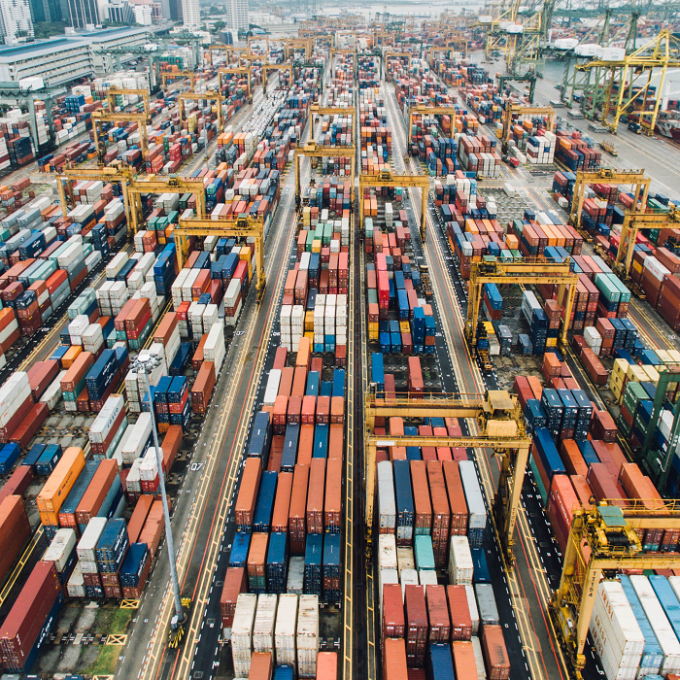How EU trade policy became EU trade politics
Over the past few years, trade has risen from relative technical obscurity to become one of the most politically contended policy areas worldwide. The EU is no exception to the trend and is in fact a front runner. Undoubtedly, the most visible factor which turned EU trade policy into hard politics is President Trump. However, political mobilisation predates the last US presidential election by a few years.
The TTIP factor
Already in 2013 and 2014, the EU was faced with an unexpected rise of political interest in trade issues, with the commencement of negotiations on TTIP, the comprehensive EU-US trade deal.
The public outcry over TTIP’s perceived threats to EU regulatory standards (most notably linked to the investor state dispute settlement mechanism) and democratic decision-making, as well as concerns surrounding transparency of the negotiations, led to commensurate political pressure from civil society and the European Parliament directed at the European Commission. This forced the EU’s executive arm, formerly unchallenged on its exclusive competence in trade policy, to reinvent not only its communication approach, but also to embark on a comprehensive policy rethink. This overhaul resulted in the new “Trade for All strategy” from October 2015, which was followed by a Trade Package in September 2017.
Both initiatives are a recalibration towards a trade policy that leverages trade agreements to promote sustainable development, human rights, fair and ethical trade. The Commission also committed to more transparency in its trade negotiations by publishing key negotiating texts going forward. Finally, the EU attempted to radically reshape investment dispute settlement. That this rather unparalleled agenda would raise eyebrows internationally became no less evident in the negotiations with Japan. The EU had to break diplomatic protocol on several occasions to live up to its commitments to transparency.
The overhaul nearly came too late. The political mobilisation around TTIP almost sank CETA, the EU’s deal with Canada. For the first time, the EU had to devote political attention at the highest level to salvage a trade deal threatened by a veto from Belgium’s Wallonia.
The Trump factor
In spite of the reforms, TTIP was put de facto on hold. Few would have predicted that criticism of global trade policy would come from the country that played arguably the largest role in shaping the consensus on the benefits of open markets: the United States.
The EU was among the first to sound alarm bells on the potential dangers of a reemergence of protectionism signaled by Donald Trump’s rhetoric during his election campaign. It is poised to avoid subscribing to those worldviews – just as it refused to be dragged into the neoconservative agenda that characterised the early days of the Bush administration. Once in office, Trump’s rhetoric turned into a tangible and persistent focus on trade issues. This prompted Commission Vice-President Jyrki Katainen to emphasise last year that “with the rising threat of protectionism and weakened commitment of large players to global trade governance, the EU must step up to take the lead”, leaving little to the imagination as to whom the statement referred to.
Partly out of principle (free trade is encoded into the EU’s identity, not least through an express commitment in its founding Treaties), and partly out of expediency (as EU’s economic model is largely export-based), the EU embarked on a reinvigorated trade agenda. It initiated negotiations on new FTAs (Australia, New Zealand) and infused talks on outstanding or stalled FTAs (Japan, Mercosur) with a newfound zeal. It also unlocked new opportunities by modernising previous-generation agreements (Mexico, Chile) and brought forward new reform initiatives for the rules-based international trade system (such as a Multilateral Investment Court).
Crunch time for trade policy
A favorite saying in Brussels is that every crisis is an opportunity. A cynic might say the EU lately managed to elevate this saying into a work method. The crises faced by EU trade policy over the previous years served as catalyst. First, for policy reform, and consequently, for an attempt to fill the void left by the US retreat from the international scene. This ambition is currently facing its biggest test: the threat of a trade sparked by the US government’s tariffs on steel and aluminum.
Protectionism is looming large over the multilateral trading system. The EU is conscious that the future of international trade will to a large extent depend on either its upcoming actions, or lack thereof. Being caught in the crossfire between the US and China as the third element of an emerging tripolar system will force the EU to take decisions on trade at the highest political level. For Juncker, bringing home trade agreements has become key to securing his legacy before his likely retirement from the echelons of European politics. This will in turn ensure that trade policy, not least in the EU, will remain highly political for the foreseeable future.
This is the first in a series of trade-focused contributions by FleishmanHillard Brussels
-

Matúš focuses primarily on prudential regulation, insurance and securitisation. Before joining FleishmanHillard, he worked in the financial services practice of a law firm. He also has work experience from the European Commission’s Directorate-General for Financial Stability, Financial Services, and Capital Markets Union and the European...
-

Thomas joined the FleishmanHillard Energy & Transport team in early 2017, with a primary focus on the aviation, automotive and logistics sectors. He advises his clients on stakeholder engagement and legislative advocacy and supports them in creating durable relationships with policymakers. Before joining FleishmanHillard, Thomas...
Find Out More
-
Are you fit for 2024? Communicating in a year of change
February 27, 2024


